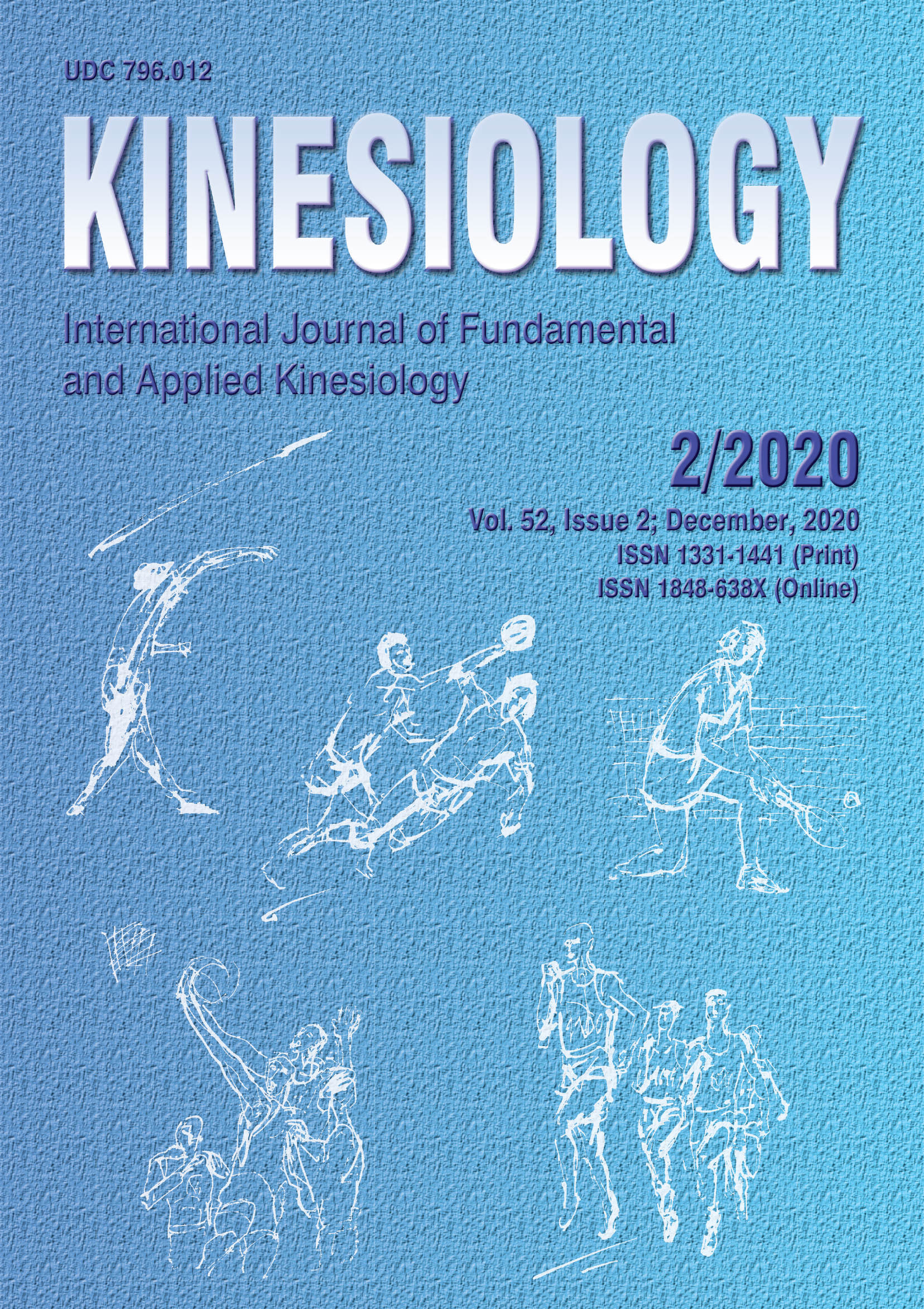THE RELATIONSHIP AMONG REPEATED SPRINT AND CHANGE OF DIRECTION ABILITIES IN FOOTBALL PLAYERS WITH CEREBRAL PALSY
Abstract
This study aimed to describe and determine relationships between repeated sprint and change of direction abilities in football players with cerebral palsy according to four sport classes (FT5 to FT8). Seventeen male football players with cerebral palsy took part in this study (23.0±4.7 years, 65.9±9.5 kg, 168.8±5.9 cm). The repeated sprint ability (6×40-m sprints with a 20-second recovery) was evaluated to determine the best sprint time, mean sprint time, and percentage of sprint decrement. The difference in lactate concentration was determined using blood samples taken three minutes before and after testing. The Illinois Agility Test (IAT) was also used to assess players’ change of direction ability. The FT8 players had better performance (p<.01) in the best sprint time, mean sprint time and in the IAT scores compared to the players of the sport classes FT5/6. Players of the sport class FT7 also reached higher performance in the IAT compared to the players of the sport classes FT5/6 (p<.05). A significant correlation was found between the best sprint time and mean sprint time (r=.94, p<.01), the best sprint time and the IAT (r=.62, p<.01), and between the best sprint time and the difference in lactate concentration (r=-.51, p<.05). The relationships between repeated sprint and change of direction abilities demonstrate the performance profile of para-footballers with cerebral palsy in those variables according to their sport classes, exhibiting lower performance than the values reported for regular football players.
Keywords: physical performance, para-sport, brain impairment, Paralympic sport
Downloads
Published
How to Cite
Issue
Section
License
Copyright (c) 2020 Kinesiology

This work is licensed under a Creative Commons Attribution-NonCommercial 4.0 International License.
At Faculty of Kinesiology we recognize that access to quality research is vital to the scientific community and beyond. Kinesiology is non-profit journal and all costs of publishing and peer review process are covered by the publisher itself or other funding sources like Ministry of Science and Education of the Republic of Croatia. Full text papers are also available free of charge at http://hrcak.srce.hr/kineziologija. There are no restrictions on self archiving of any form of paper (preprint, postprint and publisher's version).
Articles are distributed under the terms of the CC BY - NC 4.0
Kinesiology does not charge any fees to authors to submit or publish articles in our journal.


